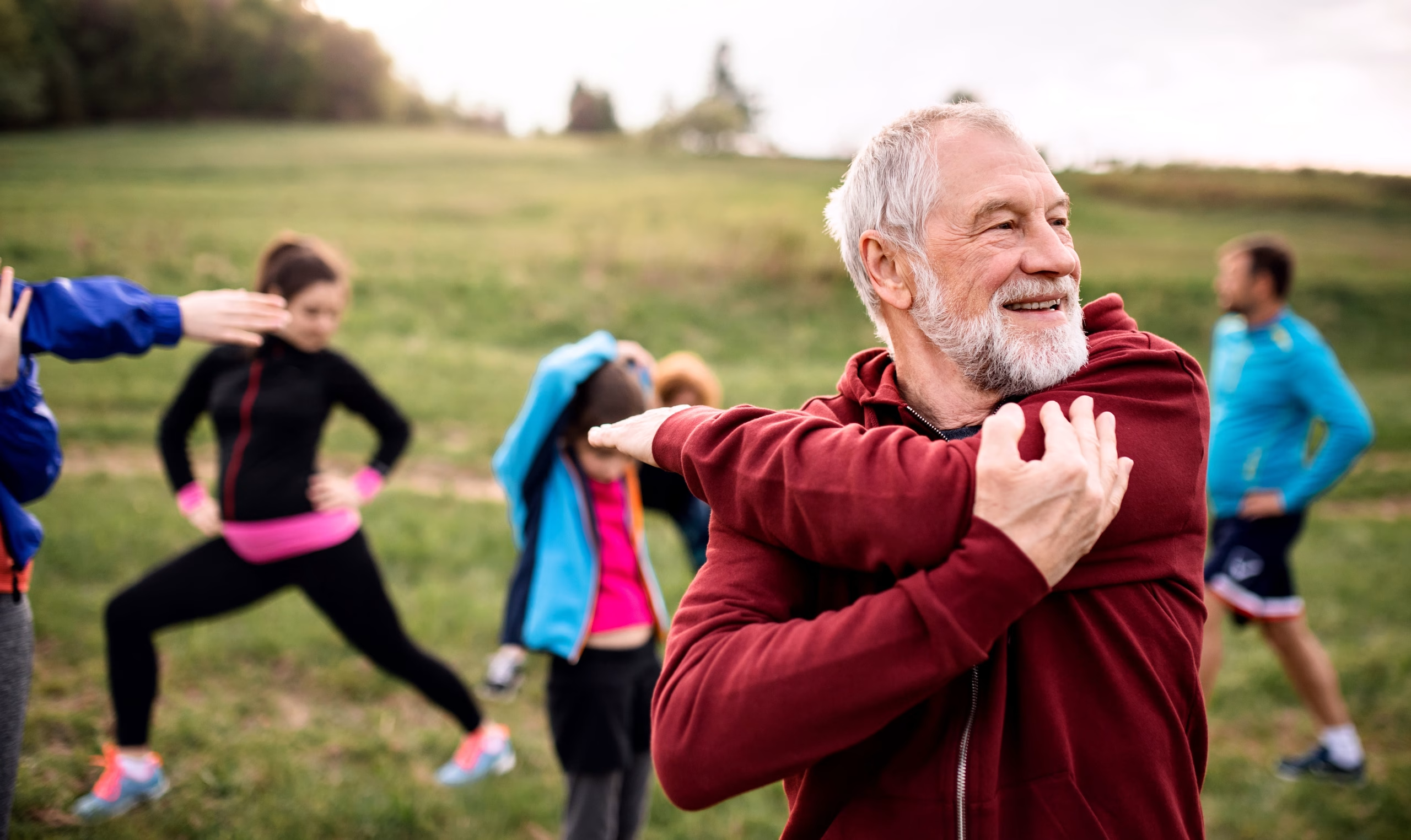
The Power of Movement: How Exercise Boosts Cancer Prevention and Recovery
October 6th, 2024
Written By: Oncology Simplified Team
Disclaimer: This information is general and may not meet individual needs. For a personalized plan tailored to your unique lifestyle and clinical requirements, book a free introductory call at 437-500-5000.
🌟 You’ve probably heard it before—exercise is good for you. But did you know that staying active can significantly lower your risk of developing cancer? According to the World Cancer Research Fund, maintaining a regular exercise routine is one of the most effective ways to prevent various types of cancer, including breast, colon, bladder, endometrial, esophageal, stomach, and kidney cancer, among others.
Why Does Exercise Help Prevent Cancer?
Exercise works wonders for your body on multiple levels. Here’s how it helps reduce cancer risk:
- Hormone Balance: Regular physical activity helps lower hormones such as estrogen, which can fuel the growth of certain cancers.
- Reduced Inflammation: Exercise helps manage inflammation, a factor linked to cancer development.
- Boosted Immune System: It strengthens your body’s natural defences against diseases.
- Faster Digestion: Improved digestion reduces exposure to harmful substances in your digestive tract.
- Healthy Weight Maintenance: Staying active helps you maintain a healthy weight, which is crucial for reducing cancer risk.
Beyond Cancer Prevention: The Multifaceted Benefits of Exercise
The advantages of regular exercise extend far beyond cancer prevention:
- Combats Other Diseases: Reduces the risk of heart disease, diabetes, and arthritis.
- Enhances Sleep Quality: Better sleep improves mood, energy levels, and reduces cravings.
- Boosts Cognitive Function: Keeps your brain sharp and enhances overall bodily function.
Navigating Cancer Treatment with Exercise
Exercise isn’t just beneficial for cancer prevention; it’s also transformative during and after cancer treatment. Yet, only about 10% of cancer patients engage in sufficient exercise during treatment. Staying active can significantly improve your treatment outcomes and quality of life.
Pre-Treatment: Building strength before treatment helps you tolerate therapies better, enhances stamina, mobility, and resilience, and balances hormone levels.
During Treatment: Exercise helps preserve muscle mass, manage hormones, support the immune system, improve sleep, and maintain energy levels.
The Benefits of Staying Active During Treatment
Engaging in physical activity during cancer treatment offers impressive benefits:
- Reduces Brain Fog and Fatigue: Alleviates mental and physical exhaustion.
- Elevates Mood: Enhances emotional well-being.
- Improves Balance and Endurance: Supports physical stability and stamina.
- Increases Range of Motion: Enhances flexibility and joint function.
- Boosts Bone Density and Muscle Mass: Strengthens bones and muscles.
- Enhances Treatment Efficacy: Complements the effectiveness of medical treatments.
- Lowers Risk of Recurrence: Reduces the likelihood of cancer returning.
Finding the Right Amount of Exercise
You don’t need to become a marathon runner overnight. Current guidelines recommend about 150 minutes of moderate activity (like brisk walking) or 75 minutes of vigorous aerobic activity each week. You can split this into manageable segments, such as 30 minutes a day, five days a week, or a longer session on the weekend.
Getting Started: Embrace a Gradual Approach 🐢
Rather than jumping into intense workouts, start slowly. Gradually increase your activity level to avoid burnout or injury. Here are some tips:
- Start Small: If 30 minutes feels overwhelming, begin with 15 minutes and gradually increase.
- Monitor Intensity: You should be able to hold a conversation during moderate exercise. If it feels too easy, increase the intensity slightly.
- Track Progress and Mix It Up: Keeping a workout log can boost motivation. Incorporate a variety of activities—cardio, strength training, and stretching—for a balanced approach.
Make Exercise Fun and Engaging
Finding enjoyment in your exercise routine can make it easier to stick with it. Whether it’s dancing, swimming, or playing with your kids, choose activities that bring you joy.
Struggling to Find Time? ⏳
Life can be hectic, but there are creative ways to fit exercise into your day:
- Commute Creatively: Walk or bike to work if possible.
- Lunch Break Walks: Use part of your lunch break to take a stroll.
- Break the Sitting Cycle: Walk around the office or take the stairs instead of the elevator.
- Walking Meetings: Take phone calls or hold meetings on the move.
- Get Coworkers Involved: Turn exercise into a group activity for added motivation.
Final Thoughts: Every Step Counts
Exercise doesn’t have to be complicated or overwhelming. Whether you’re aiming for cancer prevention or managing treatment side effects, moving your body can have a profound impact on your health and well-being. Coupled with a balanced diet and other healthy habits, regular physical activity can help you feel stronger, more energized, and ready to embrace life. So, what are you waiting for? Let’s get moving! 💪
This blog is for informational purposes only and should not be considered medical nutrition therapy, medical advice, or a diagnosis. It is not a substitute for professional consultation or recommendations from your healthcare provider.
References:
- Canadian Cancer Society. (n.d.). Being active. Retrieved from: https://cancer.ca/en/living-with-cancer/coping-with-changes/feeling-your-best/being-active
- Thomas, R., Kenfield, S. A., Yanagisawa, Y., & Newton, R. U. (2021). Why exercise has a crucial role in cancer prevention, risk reduction and improved outcomes. British Medical Bulletin, 139(1), 100–119. https://www.ncbi.nlm.nih.gov/pmc/articles/PMC8431973/
- National Cancer Institute. (n.d.). Physical activity and cancer. National Institutes of Health. Retrieved from: https://www.cancer.gov/about-cancer/causes-prevention/risk/obesity/physical-activity-fact-sheet
- Canadian Partnership Against Cancer. (n.d.). Physical activity policies. Retrieved from: https://www.partnershipagainstcancer.ca/topics/physical-activity-policies/
- University of Calgary. (n.d.). Exercise & cancer: Enhance living well (EXCEL). Retrieved from: https://kinesiology.ucalgary.ca/labs/health-and-wellness/research/research-studies/exercise-cancer-enhance-living-well-excel
- Canadian Cancer Society. (n.d.). Move more, sit less. Retrieved from: https://cancer.ca/en/cancer-information/reduce-your-risk/move-more-sit-less